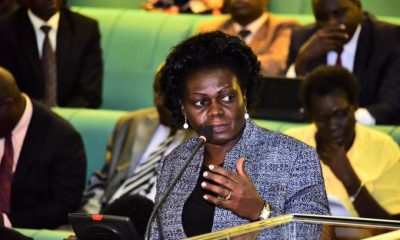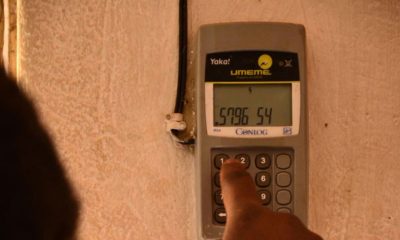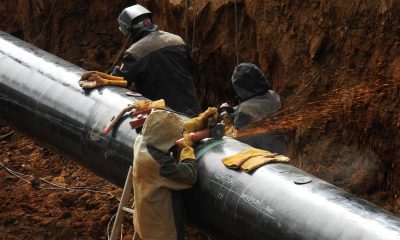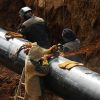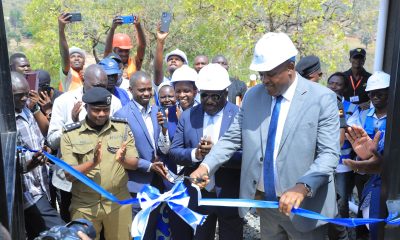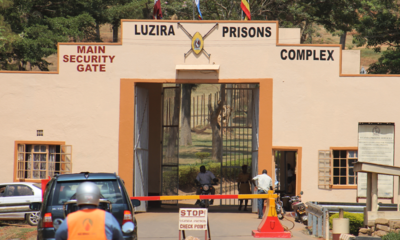In a recent update, Uganda’s Energy Minister, Ruth Nankabirwa, provided a comprehensive overview of the progress in key projects within the nation’s burgeoning oil and gas sector. The successful execution of these projects, particularly the refinery and the East African Crude Oil Pipeline (EACOP), is crucial for Uganda’s strategic interests and the anticipated commencement of oil production in the upcoming year.
Refinery Progress
Nankabirwa revealed that the much-anticipated $4 billion refinery, falling under the midstream cluster of the oil and gas sector, is poised to move forward. A significant development was the signing of a Memorandum of Understanding on December 22, 2023, between the government and Alpha MBM Investments LLC from the United Arab Emirates. This marked a pivotal step outlining cooperation and negotiation terms for the project.
Negotiations for key commercial agreements between the government and Alpha MBM Investments LLC commenced on January 16, 2024, with an expected conclusion within three months. This comes after the expiration of the Project Framework Agreement with the Albertine Graben Energy Consortium on June 30, 2023, and President Yoweri Museveni’s directive to shift to a public sector-led project.
The facility, expected to refine 60,000 barrels of oil per day, is a significant undertaking and reflects Uganda’s commitment to advancing its oil and gas capabilities.
EACOP project milestones
The EACOP Company, having obtained its construction license in January 2023, initiated its activities promptly under the Petroleum (Refining, Conversation, Transmission and Midstream Storage) Act, 2013. Construction contracts and line pipes have been issued, and early civil works are already underway in Tanzania.
The EACOP project, spanning approximately 2,740 acres in Uganda, is progressing steadily. Resettlement houses for affected individuals have been constructed and handed over, with 95% of affected persons signing compensation agreements. Notably, 91% of these compensations have been completed, with ongoing efforts to finalize the remaining payments.
However, challenges remain, with 116 cases under consideration for compulsory land acquisition due to various reasons, including untraceable individuals and landowner disputes. Nevertheless, the successful completion of the EACOP is vital to ensure the seamless progression of upstream projects at Tilenga and Kingfisher.
Tilenga and Kingfisher upstream developments
At Tilenga, significant strides have been made in developing the Industrial Area, hosting a Central Processing Facility (CPF) capable of handling 190,000 barrels. Key contractors, including Schlumberger, China Oil Services Limited Uganda, ZPEB, Vallourec, and McDermott & SINOPEC, are actively engaged in various aspects of the project.
Simultaneously, at Kingfisher, the development plan includes a Central Processing Facility with a 40,000-barrel capacity and 31 wells across four well pads. The CPF at Buhuka flats in Kikuube is currently under construction, with major contributions from China Offshore Oil Engineering Company (COOEC) and China Petroleum Engineering and Construction Corporation (CPECC).
Environmental and economic impact
Since the landmark discovery of oil in 2006, Minister Nankabirwa emphasized Uganda’s commitment to upholding the highest environmental, industrial, legislative, and regulatory standards. The oil and gas sector has significantly contributed to the country’s GDP, amounting to USD 8.6 billion, and has created over 12,000 jobs. This marks the beginning of long-term economic upliftment, promising sustained benefits for the next 25 years.
In conclusion, the strides in Uganda’s oil and gas sector, as outlined by Energy Minister Nankabirwa, signify not only economic growth but also the nation’s commitment to meeting global standards in the development of its energy resources. As these projects advance, they hold the promise of transforming Uganda’s economic landscape for years to come.
Courtesy; The Independent


